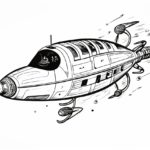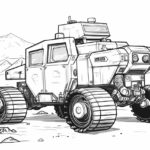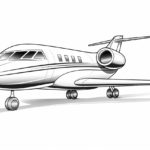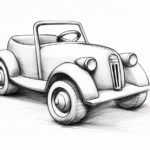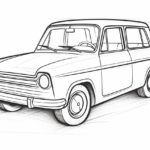Welcome to this step-by-step tutorial on how to draw a rocket. Drawing a rocket can be an exciting and imaginative experience. Whether you want to sketch a rocket for a space-themed art project or just for fun, this tutorial will guide you through the process. With some simple steps and attention to detail, you can create a fantastic and realistic rocket drawing that’s ready to soar into the cosmos. Let’s get started!
Materials Required
- Pencil
- Eraser
- Drawing paper
- Picture reference of a rocket
Step 1: Draw the Rocket Body
To begin, draw a long vertical rectangle for the body of the rocket. Make sure the rectangle is slightly wider at the bottom to give the rocket stability. This rectangle will be the main structure of the rocket.
Step 2: Add the Nose Cone
Next, draw a triangular shape at the top of the rectangle to form the nose cone of the rocket. The nose cone should be sharp and pointed, as this is the part that leads the rocket through the air.
Step 3: Draw the Fins
Now, it’s time to add the fins to the rocket. Draw three or four triangular shapes at the bottom of the rocket body. These fins will help stabilize the rocket during flight.
Step 4: Add Details to the Rocket
To make the rocket look more realistic, add some details to the body. Draw lines and circles along the length of the rocket to represent windows and other features. You can also add small squares or rectangles near the base to represent the rocket’s engine.
Step 5: Add Shading and Texture
Now it’s time to give your rocket drawing some depth and dimension. Add shading to the rocket to make it look three-dimensional. Shade in the areas where shadows would naturally fall, such as the bottom of the rocket body and the inside of the fins. You can also add texture to the rocket by using short, curved lines to show the different sections of the rocket.
Step 6: Final Touches
Take a step back and look at your drawing as a whole. Make any necessary adjustments and add any final touches that you feel are necessary to make your rocket drawing ready for blast-off.
Conclusion
Congratulations! You have successfully drawn a rocket that’s ready to explore the universe. With practice and creativity, you can draw rockets of various shapes and sizes. So, grab your pencil and let your imagination take flight as you create your own cosmic adventures with this “How to Draw a Rocket” tutorial.
Gallery of Rocket Drawings



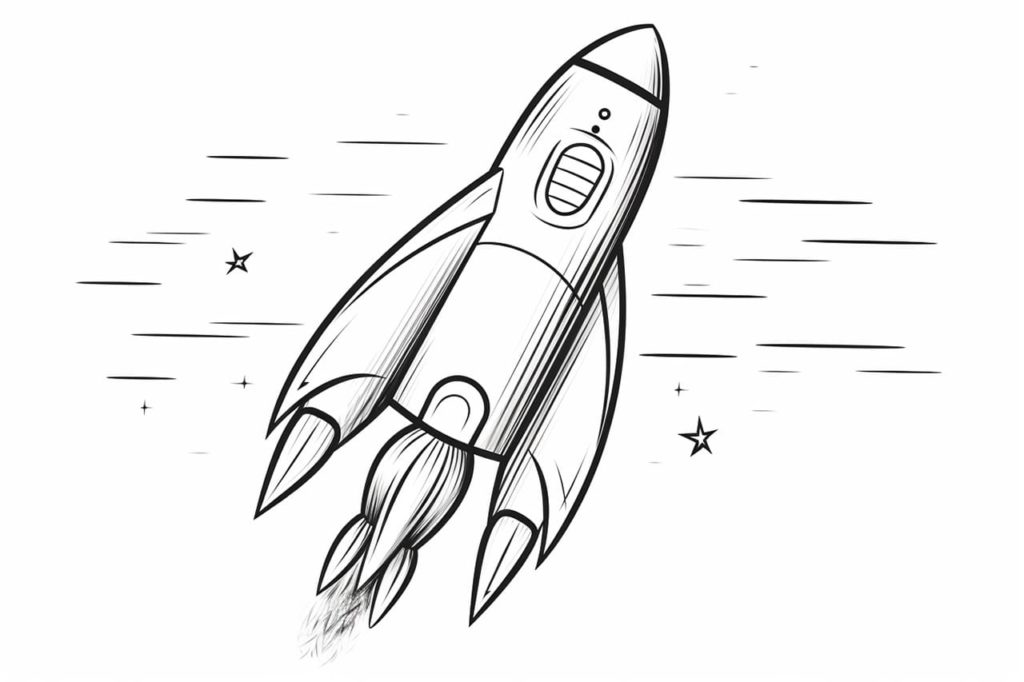
Fun Facts About Rockets
- Rockets can achieve speeds more than 18,000 miles per hour to break through Earth’s atmosphere and reach space.
- The first liquid-fueled rocket was launched by Robert Goddard in 1926 and reached a height of just 41 feet.
- Rockets have multiple stages that are jettisoned at various phases of the launch to maximize efficiency and distance.
- The Saturn V rocket, used in the Apollo moon missions, remains one of the most powerful rockets ever built.
- Rockets played a crucial role in the Cold War, leading to significant advancements in space exploration and missile technology.
- NASA’s Space Launch System (SLS) is set to be the next big rocket, designed to carry humans to the Moon and Mars.
- Rockets are used for launching satellites, exploring other planets, and for military purposes.
- Sound travels so slow compared to the speed of light that people often see a launch before they hear it.
- Rocket launches are timed precisely to align with a window when the Earth’s rotation and orbit work in favor of the mission.
- The word “rocket” is derived from the Italian “rocchetto,” meaning bobbin or small wheel.
Suggestions for Scenes and Settings for Rocket Drawings
- Launch Pad Glory: Draw a rocket poised on a launch pad surrounded by support structures and a countdown clock in the background.
- Lunar Landing: Illustrate rockets descending towards the lunar surface, with astronauts preparing to step onto the dusty terrain.
- Space Odyssey: Create a scene of rockets soaring through the solar system, passing planets and gliding through asteroid fields.
- Rocket Base: Design a bustling base on another planet, with rockets being prepared for launch and alien landscapes in the distance.
- Retro Rocket Blast: Imagine a stylized, retro-futuristic rocket racing into a starry sky, competing with other vivid creations.
- Intergalactic Trade: Draw a fleet of rockets exchanging goods at a futuristic space station, with galaxies sprawling beyond.
- Rocket Festival: Capture a festival where rockets of all sizes are displayed, against a backdrop of fireworks and cheering crowds.
- Rocket Garden: Picture rockets in a museum-like setting, lined up among informational plaques and visitors in awe.
- Alien Encounter: Compose a scene of rockets arriving at an alien world, greeted by curious extraterrestrial beings.
- Rockets in Formation: Depict multiple rockets taking off simultaneously, streams of smoke and fire blending in an awe-inspiring sight.

